Travel Zoom Shootout 2011: Lab Test Results
Six pocket long zoom digital cameras comparedPlease let us know what you think of our Travel-Zoom Shootout by completing our survey! Answer all the questions, and you'll be entered into a drawing for a $50 Amazon Gift Card! Click here to participate in our Survey, which will help us plan future reviews.
Test Results
Here's where most of our determination of a camera's overall quality is made, in the image analysis. No matter how fun or easy to use we find a camera, we figure the true quality of an image capture device is found in its images. We think you'll agree.
Lens Quality
|
Model |
Wide |
Tele |
|
Nikon |
 |
 |
|
Panasonic |
 |
 |
|
Casio |
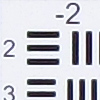 |
 |
|
Canon |
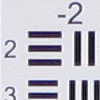 |
 |
|
Sony |
 |
 |
|
Fuji |
 |
 |
Center Sharpness: These crops taken from the center at maximum aperture, for both wide-angle and telephoto.
On shorter zooms, there's usually less difference between wide and tele in the center; the difference usually occurs in the corners. As the zoom gets longer, the lens designers have to get more aggressive with their designs, and it's harder to keep up image quality from 12x to 18x.
It's easy to see at a glance which lenses are having the most trouble at telephoto, namely the Panasonic ZS8 and Sony HX9V, both 16x, 24-384mm lenses. Both lose contrast and as a result look softer, the ZS8 more than the HX9V, but they're pretty close. Both cameras also exhibit the heaviest sharpening halos, a sign that they're struggling to maintain sharpness a little harder than some of the others. However, the frustrating part is that both lenses do the best in terms of corner sharpness, making them the top performers overall.
The Fujifilm F550EXR actually looks a little worse at wide angle, but not bad. Sharpening is also giving this lens a bit of an assist.
It's notable, though, that all of the lenses are turning out pretty remarkable center sharpness at such long focal lengths.
|
Model |
Wide |
Tele |
|
Nikon |
 |
 |
|
Panasonic |
 |
 |
|
Casio |
 |
 |
|
Canon |
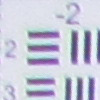 |
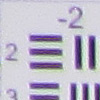 |
|
Sony |
 |
 |
|
Fuji |
 |
 |
Corner Sharpness: These crops taken from the worst-case corner at maximum aperture, for both wide-angle and telephoto.
At first glance, it's hard to see any redeeming value from these smeared and smudged crops from the corners of these travel zoom cameras. But relatively speaking, we have some clear winners and losers here. First, I should note that if you're going to fuss about a little corner softness on a 12-18x pocket zoom, get an SLR and a big backpack to hold the 24mm to 300mm prime lenses you're going to need to come close to the versatility of these pocket wonders for a trip across town.
Still, it's worth considering the tradeoffs here: I doubt you've ever seen your friends look at a photo you took and comment on the color fringing and softness in the corner. Instead, they look at the center and declare: Great shot! So the corners aren't as important. But what you don't want is what appears at the bottom of this list, the extreme softness in some of the Fujifilm F550's corners that extends deep into the frame. Atrocious. The Casio ZR100 also struggles quite a bit here, particularly at wide-angle, producing an image that looks overprocessed and artificial.
Though there's some noticeable purple and green chromatic aberration in the Canon, Sony, and Panasonic images, these really do look pretty good. The Nikon S9100 has succeeded at processing out the color aberration, but at the cost of smearing. In the end, this is probably the least noticeable aberration, though, so weigh what's important to you. Since this topic is Sharpness, though, I give the advantage to Sony and Canon.
|
Model |
Wide (%) |
Tele (%) |
|
Nikon |
||
|
Panasonic |
||
|
Casio |
||
|
Canon |
||
|
Sony |
||
|
Fuji |
Geometric Distortion: Barrel distortion is indicated with a plus (+), pincushion distortion with a minus (-). Numbers are in percent, and smaller numbers are better.
Geometric distortion at wide-angle (usually barrel which bulges out) ranges from imperceptible (Nikon S9100) to quite noticeable (Panasonic ZS8). Distortion at the telephoto end is better controlled, with all cameras in this group showing negligible (Nikon S9100 and Sony HX9V) to relatively low amounts (Canon SX230). It's interesting to note that some cameras in this group exhibit barrel distortion (+) at telephoto, when we're used to seeing pincushion (-), though most of these cameras likely have some software distortion correction applied during JPEG processing.
Speaking of software correction, we did notice that while the Fuji F550 had low geometric distortion numbers, images from its slightly anamorphic lens were poorly corrected in the horizontal direction especially at wide-angle. Objects are noticeably compressed horizontally (or stretched vertically), causing our viewfinder accuracy target to cover only about 94% of the frame horizontally at wide-angle, while vertical coverage was about 98%. At telephoto, coverage was better but still slightly asymmetrical.
|
Model |
Wide |
Tele |
|
Nikon |
 |
 |
|
Panasonic |
 |
 |
|
Casio |
 |
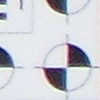 |
|
Canon |
 |
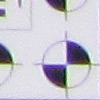 |
|
Sony |
 |
 |
|
Fuji |
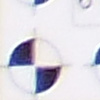 |
 |
Chromatic Aberration: Worst-case chromatic aberration in corners at wide-angle and telephoto.
This is a tougher one to call, as different people are more sensitive to one or another kind and color of chromatic aberration. Your eyes can see clearly, though, that the Canon is the worst performer here, with bright green and purple colors showing up pretty prominently.
After that, it's hard to call a winner. For all its success at suppressing C.A., the Nikon S9100 leaves behind some pretty bright purple at telephoto. The Panasonic ZS8's biggest flaw is that the contrast fades enough for the chromatic aberration to affect the blacks, something also visible in the Sony HX9V, though Sony's superior demosaicing makes it look a lot better.
As a percentage of the image, none of this is going to show up in an 8x10-inch print, so it's only important for the enthusiasts. Everyone but Canon has dealt with the chromatic aberration well enough that I'd call it a draw.
They're all impressive performers, while the SX230 loses by comparison, though I wouldn't call it a dealbreaker.
Image Quality
 |
|||||
Color: Saturation and Hue accuracy. Roll-over the links to compare cameras.
All six of these camera makers have become somewhat conservative in their color rendering, with Panasonic leading the pack toward a tame rendering. My only problem with the ZS8 is that it inherits the entire Panasonic line's trouble with yellows and oranges looking more green and brown, which is also true here.
Nikon, Casio, Sony and Fujifilm have slightly more pumped color than the others, with Canon also taking a more conservative route.
In terms of hue accuracy (after correction for saturation), Canon and Fujifilm lead the way here, closely followed by Nikon and Sony, with Casio and Panasonic bringing up the rear.
Overall, though, I see no real red flags here, with each putting out good quality, if not exactly accurate, color.
Indoors: Indoor Portrait without and with flash, in full Auto mode.
One of the key purposes of our indoor target is to determine how well the Auto White Balance system handles the incandescent light so prevalent indoors. Another interesting point is how much the exposure system raises the ISO and how well the noise suppression system degrades fine detail, like hair. Shutter speeds are usually slow enough that a tripod is a must without a flash. Finally, we take an Auto flash shot to see how much ambient light is retained, how the exposure comes out, and if the shutter speed is fast enough to avoid typical motion blur when handheld.
Taking them one at a time, the Nikon S9100 renders the scene a little red, and blows out the flash shot, a strange outcome considering the slow 1/30 second shutter speed.
The Panasonic ZS8 does better with only a slight red tint, but also produces a flat flash shot with little ambient light to warm the image up; the upside is that its fast shutter speed of 1/125s will result in sharper indoor shots.
Red again, the Casio ZR100 is a little muddy and the camera raises ISO to 800; it gets less muddy with the flash, but becomes more red. Shutter speed with the flash is quite slow at 1/25s, which could lead to motion blur.
Canon again comes close with the SX230, if a little yellow, and ISO goes up to 1,600; and the Auto Flash mode leaves a little ambient light in the shot for a more natural looking image; but the shutter speed is 1/40 second, so you'll have to hold it still to let the IS do its work.
The Sony HX9V comes out reddish too, but not bad. Auto Flash comes out a bit too bright, but again is certainly usable, and hand-holdable at 1/60 second.
The Fuji F550's just disappointing here, with a dark, yellowish rendering at ISO 800, and the flash renders her skin a rather vampirish purple pink. Not good. Shutter speed with the flash was only 1/38 second.
Overall, we'd have to give it to the Panasonic, Sony, and Canon for indoor quality.
ISO: Noise and Detail: For reference, this bottle label has razor sharp detail, but most cameras don't show that. All of these cameras are suffering somewhat from noise suppression that attacks what amounts to the grout line in the mosaic.
Be sure to see our Print Quality results below for a better idea of how this affects print size. Note that we've also added the print sizes below the crops to help you see what the different ISO settings can produce in terms of print size (this isn't an estimate, we really print the images).
Overall, the Nikon and Canon score higher, and the Sony and Casio vie for third.
Print Quality: Since this is our first Shootout, we weren't sure how best to show a ratio of ISO to print size for a range of cameras, so we've prepared two versions. The line plot shows how print size declines as ISO increases, and is long how I've thought about charting the gradual descent, often marked by interesting plateaus for this reason or that. We've also plotted it in a simple spreadsheet view, with different colors for each size, a method that also gives a meaningful visual. It's also a heck of a lot easier to create, allowing us to compare a greater range of cameras over time.
Please let us know which you like by emailing. Click Here to let us know!
|
Cameras are sorted in the order of descending performance, which is something of a judgment call on my part (as is usually the case). There are a few bumps of interest here and there, though. The Canon SX230 is the only camera that can make a 16x20-inch print at both ISO 100 and 200. The Nikon S9100 starts at ISO 160, not 100, but still manages to make a decent 16x20. The HX9V only starts out at 13x19, but fares a little better than most at ISO 800. The Casio ZR100 makes an even descent down the slope, but still makes a usable print at every size. The Panasonic ZS8 doesn't start out as good, but still manages a good 5x7 at ISO 1,600. The Fujifilm F550 suffers from very soft corners that extend quite far into the frame. It's a close call between 11x14 and 8x10 on that count, but I think most would be fine with 11x14-inch prints from the F550. The F550's is the only one that allows a good 4x6 from ISO 6,400. If the F550 had a better lens, it might have placed higher in our overall test, but the image quality lands it at the bottom. |
|||||||||||||||||||||||||||||||||||||||||||||||||||||||||
|
|||||||||||||||||||||||||||||||||||||||||||||||||||||||||
|
Here is the same information presented differently. You can get a pretty quick picture of which cameras are doing better than others. It's also worth noting that each camera will make a good 11x14-inch print at ISO 400, and all but the Casio and Panasonic will make a decent 5x7 at ISO 3,200; and for that matter, the Casio still makes a good 4x6, which is all some shooters will ever print. Many recent SLRs would show dark green blocks all the way up to ISO 1,600 for comparison. Again, please let us know which display method you prefer if you have the time to complete our survey. By completing the survey, you'll be entered into a drawing for a $50 Amazon Gift Card! |
Performance
|
Model |
Startup |
Full AF Lag |
Pre-focused |
Single Shot |
Full-Res Burst Speed* |
|
Nikon |
~1.5 |
0.22 / 0.22 |
0.011 |
1.25 |
9.5 (5) |
|
Panasonic |
~1.5 |
0.24 / 0.25 |
0.010 |
1.58 |
1.9 (5) |
|
Casio |
~2.8 |
0.15 / 0.29 |
0.007 |
0.79 |
10 (30) |
|
Canon |
~2.0 |
0.40 / 0.53 |
0.090 |
2.03 |
3.2 (>20) |
|
Sony |
~2.1 |
0.15 / 0.13 |
0.018 |
1.70 |
10 (10) |
|
Fuji |
~3.3 |
0.22 / 0.19 |
0.021 |
1.04 |
8 (8) |
|
Model |
Full Power Flash Recycle |
Low Light |
Low Light AF Limit |
USB Transfer |
CIPA |
|
Nikon |
4.6 |
~1/8 |
0 |
5,128 |
270 |
|
Panasonic |
4.9 |
~1/4 |
0 |
6,591 |
340 |
|
Casio |
3.3 |
~1/8 |
0 |
11,600 |
450 |
|
Canon |
6.2 |
~1/4 |
0 |
8,308 |
210 |
|
Sony |
8.0 |
~1/4 |
0 |
10,128 |
300 |
|
Fuji |
3.4 |
~1/2 |
0 |
7,898 |
300 (CIPA?) |
|
* Manufacturer's specs. |
|||||
Startup: The Nikon S9100 and Panasonic ZS8 tied for first place in startup to first shot time. The Fuji 550 was the slowest to capture a shot after startup, but the Sony took longer to activate its controls (up to 7 seconds).
Autofocus: The Sony HX9V and Casio ZR100 were the fastest at autofocus, though the Nikon S9100, Panasonic ZS8 and Fuji F550 were still very fast. The Canon SX230 lags the pack here, without only average AF speeds. The Casio, Panasonic and Nikon had the fastest prefocused shutter lag, though the others were still quite fast.
Shot-to-shot: Casio had the best shot-to-shot times in single-shot mode, while the Canon was the slowest. Most of the CMOS sensor models had fast full-resolution burst modes ranging between 8 and 10 frames per second, except for the Canon which topped out at 3.2 fps. The CCD-based Panasonic ZS8 was the slowest, at 1.9 fps. (Its CMOS-based sibling the ZS10 can do 10 fps at full resolution, but image quality isn't as good.)
Flash recycle: The Casio was the fastest at recycling the flash after a full power discharge, while the Sony was the slowest but the Sony's flash was the most powerful in our tests.
Low-light AF: The Fuji could only focus down to about 1/2 foot-candle without AF-assist, while the Canon, Panasonic and Sony could focus down to about 1/4 foot-candle unaided. The Nikon and Casio could focus down to about 1/8 foot-candle without AF-assist, and all could focus in total darkness with it.
Download speeds with the same card and computer ranged from about 5MB/s (Nikon) to well over 11MB/s (Casio). CIPA battery life also varied quite a bit, from only 210 shots on a charge from the Canon to up to 450 from the Casio. We're not sure if the Fuji's 300 shot rating complies to the CIPA standard, though.










































Follow Imaging Resource: